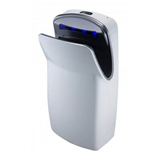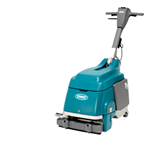Looking to buy a commercial stack dryer in Australia? This detailed guide covers pricing, types, compliance, warranties, and expert tips to help you choose the best stack dryer for your business needs.
Key takeaways
- Price range: Commercial stack dryers in Australia cost $7,000–$25,000+ depending on capacity (10 kg–21 kg), energy source, and automation.
- Capacity & throughput: Popular units range from 10 kg to 21 kg per drum, offering combined drying throughput of 20–40 kg per cycle, useful in high-demand operations.
- Energy efficiency: Look for heat-pump or moisture-sensing models delivering up to 30% savings in energy bills.
- Space savings: Stack dryers cut footprint by ~50% versus side-by-side units, a vital asset in compact laundries.
- Compliance & certification: Must meet AS/NZS 60335 electrical safety, ventilation/combustible standards, and, where applicable, gas installation codes.
- Financing: Equipment leasing with 5.5–7.9% APR or chattel mortgage is common; some units come with 5-year parts warranty and 1-year labour.
Introduction
When every inch of floor space counts, a commercial stack dryer is a smart investment for Australian businesses. These vertical systems, designed for laundromats, aged care, hotels, gyms, and mining camps, combine washer and dryer units vertically or feature double dryers in one stack. The result: space-efficient, high-throughput performance with lower operational costs.
In this guide, we'll explore stack dryer types, current pricing, energy efficiency, compliance and safety considerations, maintenance essentials, financing and warranty models, plus key frequently asked questions. Whether you're setting up a new laundry operation or upgrading existing laundry equipment, this guide delivers data-driven insights and practical tips to support smart buying.
Types of commercial stack dryers
Washer-dryer stack combos
- Units included: Typically pair a 10–14 kg washer with a 10–14 kg dryer
- Pros: Full wash and dry cycle in a compact footprint (~0.5 m²)
- Use cases: Small laundromats, apartments, hospitality venues with limited space
- Estimated cost: $10,000–$18,000
Double dryer stacks
- Configuration: Two dryers in vertical stack, usually each 14–21 kg capacity
- Pros: Faster cycle turnaround, dry one load while another is filling
- Use cases: High-volume laundries in aged care, mining, central laundry rooms
- Estimated cost: $12,000–$25,000+ depending on capacity and features
Energy-efficient heat-pump stack dryers
- Feature: Recycle heat instead of venting, using up to 30% less energy
- Pros: Lower running costs, reduced carbon footprint
- Cons: Higher initial investment (~+15–25%)
- Estimated cost: $15,000–$30,000 per stack
Gas vs. electric models
- Electric stacks: Easier to set up, compatible with standard outlets; higher energy running costs
- Gas stacks: Faster drying, lower energy costs, but require certified gas installation (~$1,500–$4,000)
- Heat-pump option: Highest energy savings; best if utility consumption is a key concern
Price overview
10 kg washer-dryer stack
- Basic electric: $7,000–$10,000
- Heat-pump variant: $12,000–$15,000
14 kg washer-dryer stack
- Standard electric/gas: $10,000–$18,000
- Heat-pump version: $16,000–$20,000
14 kg double dryer stack
- Electric/gas: $12,000–$20,000
- Heat-pump double stack: $18,000–$25,000+
Specialist configurations
- Coin/card payment systems add $1,000–$2,500
- Stainless steel drums, rear controls upgrade adds $2,000–$3,000
Select the best stack dryer for your setup
Selecting the ideal commercial stack dryer depends heavily on your specific operational needs, business size, and sustainability goals. This usage-based selector tool helps you match your requirements with the most suitable stack dryer model, ensuring you maximise efficiency, space, and cost-effectiveness.
Best model for your business type:
- New laundromats with limited space
- For startups or small laundromats where floor area is at a premium, a compact 10–14 kg washer-dryer stack offers an all-in-one solution with a minimal footprint (around 0.5 m²). Optional coin or card payment systems can be integrated, enabling self-service and easy revenue collection without additional staff.
- Aged care facilities, hotels, and high-turnover venues
- Operations with heavy linen throughput benefit from double dryer stacks (2× 14 kg dryers) which allow simultaneous drying cycles, reducing wait times and increasing productivity. Gas-powered models are often preferred here for their faster drying times and lower running costs, especially when laundry volume is high.
- Eco-conscious and energy-sensitive businesses
- If minimising energy consumption and reducing your carbon footprint are priorities, heat-pump stack dryers are the optimal choice. Despite higher upfront investment (typically 15–25% more than electric or gas units), these models deliver up to 30% savings on energy bills through advanced heat recycling technology, making them ideal for businesses committed to sustainability and long-term operational savings.
By considering your business size, daily laundry volumes, energy preferences, and space constraints, this model selector tool empowers you to invest wisely and avoid costly mismatches between equipment capabilities and operational demands.
Purchase considerations
Capacity and throughput
- Match washer-dryer capacity to daily linen volume: e.g., ≈2 loads/hour × 14 kg = 28 kg/hr
- For high turnover, consider double dryer stacks to improve cycle overlap
Footprint & space planning
- Stack systems often take under 0.7 m², around 50% less space than two separate horizontal units
- Account for clearance: front loading, maintenance back access, and exhaust venting
Energy type & efficiency
- Electric vs gas vs heat-pump options, get running cost estimates based on real kWh or MJ usage
- Look for moisture sensors to avoid over-drying
- Heat-pump models may reduce energy bills by 20–30%
Controls & payment integration
- Manual controls are cheaper; electronic/programmable controls add user convenience
- Coin/card systems essential for laundromats (add $1k–$2.5k)
- Digital usage monitoring supports preventative maintenance
Ventilation & exhaust
- Electric/heat-pump units require venting or internal condensation management
- Gas stacks require external flue systems and compliant exhaust vent spacing
Maintenance & spare parts
Routine upkeep ensures longevity:
Daily / After each load:
- Clean lint filters and check for foreign objects
- Inspect drum and gasket for wear
Weekly:
- Clean condenser (heat-pump models) or vent ducting
- Check door seals for integrity
Monthly:
- Test safety cut-offs and thermal switches
- Deep clean internal drum and gaskets
Replacement parts:
- Lint filters: $50–$150
- Seals and gaskets: $80–$250
- Control modules: $400–$1,200
- Heating elements or valves: $350–$1,500
Service agreements:
6–12-month preventive maintenance plans reduce breakdown risk and prolong equipment life, especially beneficial in 24/7 operations.
Financing & warranty
Financing options:
- Equipment finance or leasing: 5.5–7.9% APR, terms 2–5 years
- Chattel mortgage: Asset ownership upfront with GST claim
- Operating lease: Off-balance sheet, with upgrade options
Eligibility criteria:
- ABN active >12 months, GST registration, sound financials, supplier quote
Warranty coverage:
- Standard: 1 year labour + 3 years parts
- Extended: Up to 5 years for key components like drums or sensors
- Supplier backing: Local service teams crucial for rapid repairs
Compliance & certification
Electrical safety
- Must meet AS/NZS 60335: tumble dryers standard
- Carry the RCM (Regulatory Compliance Mark)
Gas units
- Require certified gas fitting and metering
- Must respect AS/NZS 5601 for gas installations
- Project must pass local gas authority checks
Ventilation & fire safety
- Exhaust systems must comply with combustible surface regulations
- Electrical installations must pass inspection under local building codes
Environmental & energy regulation
- Heat-pump models fall under energy efficiency schemes
- Moisture-sensing systems may reduce overall energy usage and align with green policies
Installation and site readiness
Preparing your site correctly before the arrival of a commercial stack dryer is essential to ensure safe installation, optimal performance, and long-term efficiency. Inadequate site readiness can lead to costly delays, damage to equipment, or operational bottlenecks, especially in high-throughput environments like laundromats, aged care, or hospitality.
Here’s what to check and prepare before delivery day:
- Flooring requirements
- A level concrete slab is ideal to support the weight and reduce vibrations during operation. Where concrete isn’t available, consider installing vibration-dampening pads or rubber levelling feet to protect both the unit and your flooring.
- Clearances and spacing
- Leave a minimum of 100–150 mm at the rear and sides of the machine for airflow, heat dissipation, and technician access. Insufficient clearance can reduce performance and complicate maintenance.
- Power supply and electrical capacity
- Most commercial stack dryers in Australia require either single-phase 240V or three-phase 415V power, depending on the model. Always verify your site’s electrical capacity and circuit protection with a licensed electrician before purchase.
- Gas supply (for gas-heated models)
- If you’ve selected a gas dryer, ensure:
- A licensed gas fitter is available for connection
- Proper ventilation is in place
- A regulator and shut-off valve are installed in line with AS/NZS 5601 standards
- Drainage requirements
- While standard stack dryers don’t need drainage, washer-dryer combo stacks or heat-pump dryers with condensation lines do. Ensure appropriate floor or wall drainage is available and compliant with local council plumbing codes.
- Ventilation planning
- Dryers must expel hot air or condensation efficiently. For vented systems:
- Keep ducting short and as straight as possible to maximise airflo
- Use rigid metal ducting over flexible to reduce lint buildup
- Install a backdraft damper to prevent outside air from entering
For condenser or heat-pump systems, confirm that heat and moisture dispersal won't affect nearby equipment or create WHS issues.
Frequently asked questions (FAQs)
What’s the lifespan of a stack dryer?
~10–15 years with proper maintenance.
Do stacked units dry slower?
No, drying time matches similar-capacity stand-alone units when properly air-flow maintained.
Is moisture-sensing worth it?
Yes, prevents over-drying, cuts energy use by 10–20%.
Can I stack any washer and dryer?
No, must be factory-designed stacks; mixing brands voids safety and warranty.
Where are they commonly used?
Ideal for laundromats, Aged Care, Hotels, caravan parks, mining camps, student accommodation .
Electric vs gas cost comparison?
Gas costs ~30% less per drying cycle but requires gas line installation and ventilation.
Are stack dryers noisy?
Comparable to horizontal units, use anti-vibration pads under the tower for noise reduction.
Can I get coin-operated models?
Yes, coin or card payment terminals are common in laundromats; adds $1k–$2.5k to base price.
Do heat-pump dryers require special installation?
No venting required, but need drain connection for condensate; ideal for enclosed spaces.
Conclusion
Commercial stack dryers are smart, space-efficient, and practical investments for Australian laundry applications. With a solid understanding of sizing, energy options, financing, compliance, and maintenance, buyers can save time, cut operational costs, and ensure long equipment lifespans.
Always vet suppliers carefully, prioritise local service, genuinely stock parts, clear warranty terms, and flexible financing solutions. By referencing the stats, pricing ranges, and tips above, you’re well-positioned to make a confident and cost-effective purchase.









